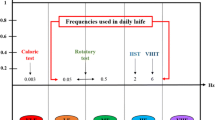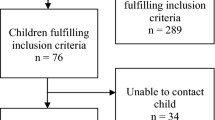Abstract
As coexisting vestibular and cochlear lesions are of etiological importance, evaluation of children with congenital or early acquired hearing impairment (HI) should include vestibular assessment. A rotation test requires specific equipment and allows only detection of bilateral vestibular impairment. An impulse or head thrust test allows assessment of one ear at a time, detects more pronounced caloric side differences and can be performed without any equipment. We report a consecutive series of children with profound sensorineural HI investigated at a tertiary hospital unit. Age at taking first steps without help, the results of temporal bone images (CT/MRT) and vestibular tests were collected retrospectively from patient files. The children were 12 to 90 months old at the time they attended both a rotation and an impulse test. All 14 children cooperated in the impulse test, and 12 completed the vestibular rotation test successfully. Three out of 14 children tested so far have been confirmed to have a bilaterally pathological vestibulo-ocular reflex confirmed both in the rotation test and the impulse test. Our results show that both the rotation test and the vestibular impulse test can be successfully performed on small children at a regular outpatient appointment.

Similar content being viewed by others
References
Angeli S (2003) Value of vestibular testing in young children with sensorineural hearaing loss. Arch Otolaryngol Head Neck Surg 129:478–482
Backous DD, Quigley SM (2000) Vestibular assessment and ear selection for cochlear implantation: the role of bedside testing. Adv Otorhinolaryngol 57:168–172
EU Work Group on Genetics of Hearing Impairment (1996) In: Martini A (ed) European Commission Directorate, Biomedical and Health Research Program. Hereditary deafness, epidemiology and clinical research (HEAR), Info letter 2, pp 25–26
Halmagyi GM, Curthoys IS (1988) A clinical sign of canal paresis. Arch Neurol 45:737–739
Joint Committee on Infant Hearing (2000) Year 2000 position statement: principles and guidelines for early hearing detection and intervention programs. Am J Audiol 9:9-29
Konradsson KS, Magnusson M, Linde G (1997) Usher’s syndrome and cochlear implant. Laryngoscope 107:406–407
Möller C (2003) Balance disorders in children. In: Luxon LM, Furman JM, Martini A, Stephens D (eds) Textbook of audiological medicine, clinical aspects of hearing and balance. Martin Dunitz, an imprint of Taylor & Francis Group, London, pp 861–868
Acknowledgements
We thank Ronny Lingstam for preparing the drawings.
Author information
Authors and Affiliations
Corresponding author
Rights and permissions
About this article
Cite this article
Mäki-Torkko, E., Magnusson, M. An office procedure to detect vestibular loss in children with hearing impairment. Eur Arch Otorhinolaryngol 262, 328–330 (2005). https://doi.org/10.1007/s00405-004-0807-z
Received:
Accepted:
Published:
Issue Date:
DOI: https://doi.org/10.1007/s00405-004-0807-z




